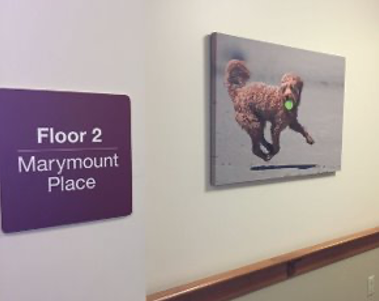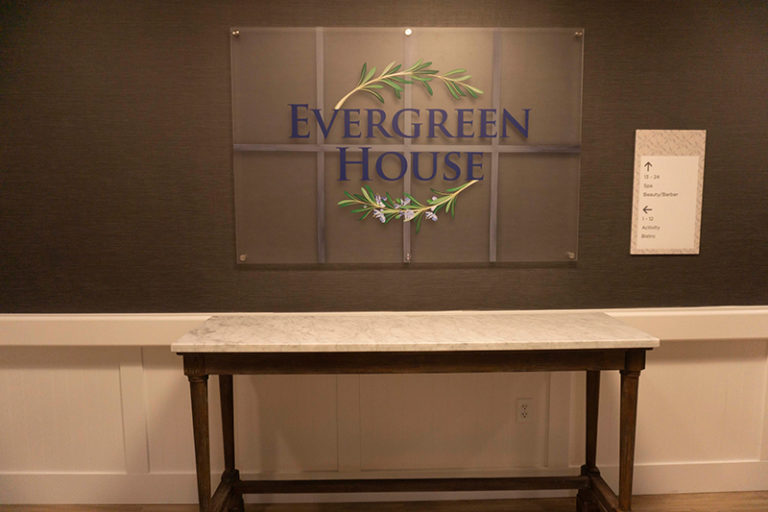Helping People Find Their Way Through Your Community
Individuals living in senior living residences often face challenges in wayfinding for a variety of reasons that include reduced short-term memory, difficulty with visual acuity, and limitations in the built environment that inhibit route-finding. Due to these considerations, individuals may demonstrate reduced involvement in a community and/or increased need for assistance; therefore, reducing their independence. Planning for supportive orientation and wayfinding within a building ideally starts at the beginning of the design process. The overall building layout has a major impact on how easy it is for people to find their way. Signage and artwork should be considered last, as an add-on to the overall design. The following are a few things to consider when choosing signage and artwork.
Cues and Landmarks
- Artwork, such as pictures, statues, flags, etc., can be used to distinguish one area from another. These should be placed at key decision points and ends of hallways. They can be used in addition to signage.
- Avoid artwork that is behind glass that causes glare. Also, avoid hanging a lot of similar art, because when it’s all alike in color, scale, palette or theme, it doesn’t serve as a meaningful cue.
- Cues should be bright, big, and distinctive, featuring identifiable, simple objects (i.e., a large flower rather than a landscape) so that the aging eye can see and recognize the image from a distance. Cues are most effective when they reflect an easily identifiable (or namable) image, as opposed to abstract art.
- Cues should relate to the space if possible (e.g., food/eating/cooking cues near a dining room).
- Cues should be illuminated and not at the end of a dark hall.
- Households or neighborhoods within a building should be decorated distinctively, simply and as homelike as possible. Make sure all rooms are visually organized, use maximum contrast whenever possible, and are decorated as their own unique space.
- Bedrooms should have a space for at least an 8”x10” framed photo of the person. The person should choose a photo that is meaningful to them (most likely that will be a photo from the past).
- Doorways should be well lit; trim should contrast from the walls; doors should have permanent hooks installed for hanging items for room personalization; all handles should be clearly visible.
Over the past seven years, Brush Development participated in an NIH funded clinical trial to determine the effect of adding dementia-friendly signage and art cues to assisted and independent living communities to improve the ability of individuals living in the community who exhibit wayfinding impairments to find their way to important destinations. The goal of this research was to improve wayfinding in residential environments for a vulnerable population of frail, cognitively impaired older adults by providing a unique environmental intervention using cues. As part of the study, Spaced-Retrieval (SR) memory intervention (Benigas, Brush & Elliot, 2014; Brush & Camp, 1998) was used to help participants learn to remember to look for the new signage and cues to find their way throughout the communities. In the coming months, we look forward to being able to share published data with you to help improve the wayfinding in your community.





